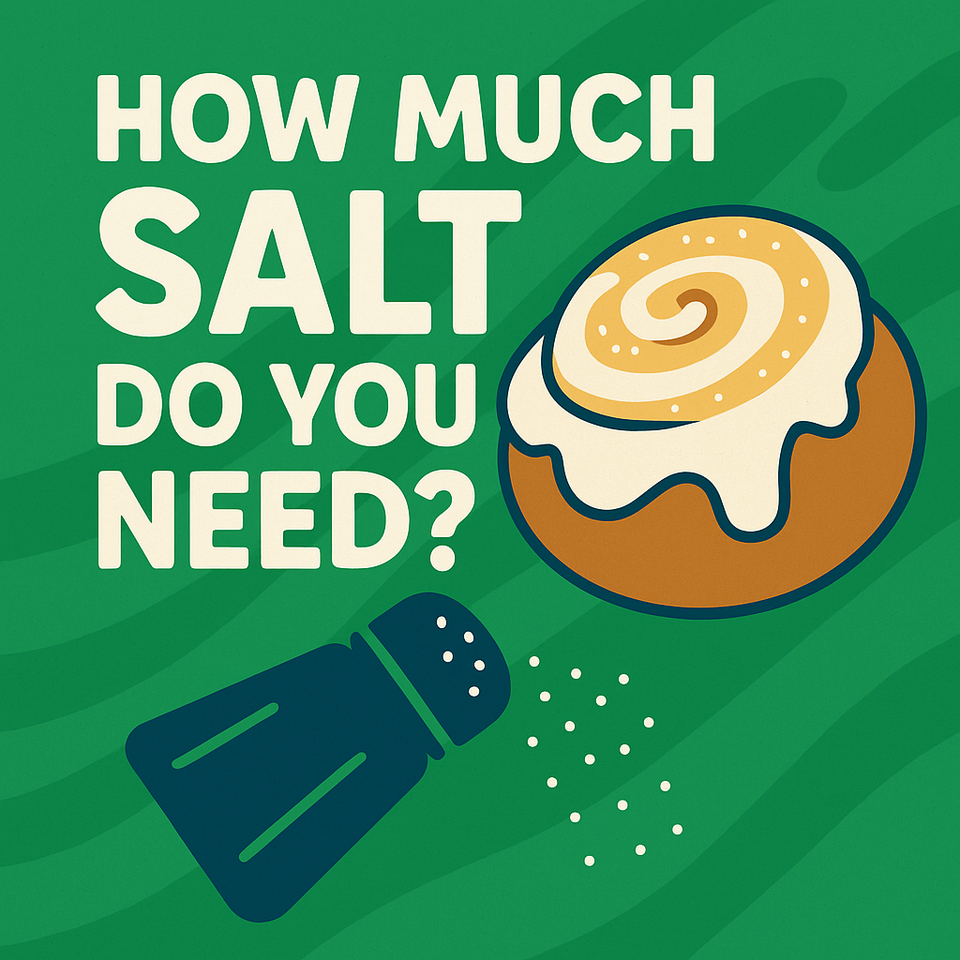How Salty Are You, Really?

If you've ever finished a run looking like a cinnamon roll that's been dusted in salt, or maybe the Michelin Man, this one's for you. Let's break down salt and sweat for runners, because, spoiler alert, your gels and drinks might not be cutting it.
1. What Kind of Sweater Are You?
Not the cozy winter kind, we mean sweat. Every runner falls somewhere on the sweat scale, from barely glistening to full waterfall. The type of sweater you are affects how much fluid and sodium you lose, and how much you need to replace.
Here’s a quick guide to help you figure it out:
| Sweater Type | Sweat Rate (L/hour) | Sodium Loss (mg/hour) | Sodium Replacement Target (mg/hour) |
|---|---|---|---|
| Low Sweater | 0.5 to 1.0 | 250 to 1000 | 150 to 500 |
| Medium Sweater | 1.0 to 1.5 | 500 to 1500 | 300 to 750 |
| High Sweater | 1.5 to 2.0 | 1000 to 2000 | 500 to 1000 |
| Heavy Sweater | 2.0 to 2.5 | 1500 to 2500 | 600 to 1000 |
If you're leaving salt rings on your shirt or tasting salt on your lips post-run, you’re probably in the high or heavy sweater club. If you are dripping sweat or feeling dizzy, you may be in that heavy sweater club, too. A good club to be in as this is where I sit! To nerd out a little, someone sweating 2 litres an hour with 1000 mg of sodium per litre loses around 2000 mg of sodium each hour and should aim to replace around 600 to 1000 mg of that while running. Don't worry, keep reading as I will explain the gibberish I just said.
2. Are Your Gels and Electrolytes Enough?
Most guidelines suggest replacing about 30 to 50 percent of what you lose. For heavy sweater users, that's 600 to 1000 mg of sodium per hour.
Let’s do a quick reality check:
- Maurten Gel 100 = 20 mg sodium (uhh, nope)
- Maurten Gel 160 = 32 mg sodium (still nope)
- Skratch (500 mL) = 400 mg sodium (okay, better)
- Tailwind (1 bottle) = ~630 mg sodium (solid start)
- Nuun tablet = 300 to 360 mg sodium (good sidekick)
- SaltStick capsule = ~215 mg sodium (plus potassium, magnesium) - though I’m not a huge fan of these for runs. They take longer to digest, can burst in the stomach, and are often hard on the GI system. I much prefer chews because they hit the bloodstream faster, and you can better control your intake.
- Salt chews (varies by brand) = usually ~100 to 250 mg sodium per chew
- Gatorade (20 oz) = ~275 mg sodium (surprisingly low)
- Coke = 10 to 15 mg sodium (fun for sugar, not for salt)
Basically, if you’re just sipping Gatorade or popping a couple of gels, you might be seriously under-fueled on the salt front. SaltStick capsules and salt chews are a great way to boost your intake, especially if you're not into chugging a second bottle or crunching on pickles mid-run.
3. How to Calculate What You Need
Here’s the cheat sheet:
- Estimate your sweat rate (weigh yourself before and after a 1 hour run without fluid intake)
- Estimate your sodium concentration (white streaks = salty sweat)
- Multiply the sweat volume by the sodium concentration
Example: 2 L/hour sweat rate × 1000 mg sodium/L = 2000 mg sodium/hour
You only need to replace about half of that during exercise = 600 to 1000 mg/hour.
If that still doesn't make sense, follow the table above and place yourself in a category (low, medium, high, heavy), then experiment.
4. What Real Food Can You Use?
Gels get boring. Real food can be your salty sidekick and yummy to boot:
- Green olives (5 to 6) = 400 to 500 mg sodium
- Pickle slices or juice (1/4 cup) = 500 to 900 mg
- Pretzels (20 minis) = 400 to 500 mg
- Beef jerky (1 oz) = 400 to 600 mg
- Salted potatoes (small handful) = 300 to 400 mg
- Onigiri with soy sauce = 400 to 500 mg
Pair these with your drink of choice. Like:
- Skratch plus 6 olives = ~900 mg
- Tailwind plus jerky = ~1000 mg
- Nuun plus pretzels = ~800 to 900 mg
- SaltStick capsule plus Skratch = ~615 to 700 mg
Mix and match until you find your sweet (and salty) spot.
Last Thought: If you’re cramping, dizzy, or salt-painted post-run, your body’s shouting for more sodium. Try different combos during training and don’t wait for race day to wing it. Want help building your own fuelling plan? I'm here for it, let's nerd out together.

Member discussion